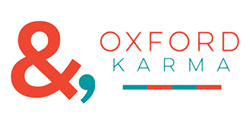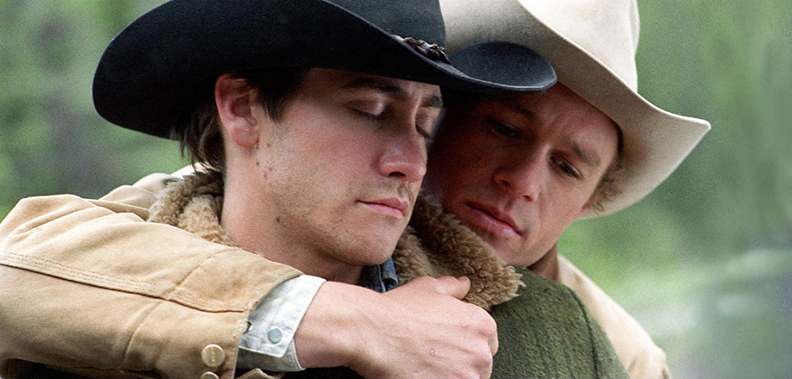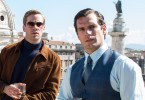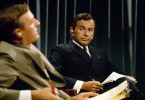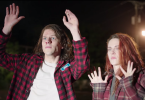“Do you remember the first time you realized you were straight?” It’s a fond response non-heterosexual people like to use against those who identify as straight when they criticize alternative sexualities. Maybe it isn’t entirely wrong.
Any boy who remembers staying up late to sneak peeks at the bad ’80s pornos their best friend smuggled from under his older brother’s bed can remember how exciting it was to see a naked woman (or man). Alternatively, girls may remember watching their older sister kiss her partner and wondering what that felt like. Everyone experiences their “sexual awakening,” a term my mother decided scarred me with at the tender age of 12.
Hollywood, at the ripe age of 105, is just now having theirs.
With less than 50 African American actors and actresses carrying home an Academy Award more than 50 years after the fight for equality began, it isn’t surprising how underrepresented the LGBT community has been. Prior to the release of the iconic Brokeback Mountain in 2005, there was a short list of films breaching the subject of sexuality, and an even shorter list of actors and actresses who were out.
It can’t really be surprising that the equality movement is slow-going in the film industry, but the problem with LGBT films is that they’re more about the LG and less about the BT. (If you aren’t so great with acronyms, LGBT stands for Lesbian Gay Bisexual Transgender but encompasses the entire spectrum of sexuality and gender identity.)
On that short list of sexual Hollywood films, you’ll see several classics that demonstrate a trend:
– There are role-reversal classics, such as Some Like It Hot and Glen or Glenda. These films, released prior to 1960, play with the idea of a person dressing up as the opposite gender. While this seems relatively mild today, they were revolutionary in a time where people couldn’t be accepted on skin color alone.
– Following the Stonewall riots in 1969, film turned its focus to more obvious roles for sexuality. 1970’s The Boys in the Band was one of the first clear attempts Hollywood made at marketing a film with openly gay characters. Some films, such as The Rocky Horror Picture Show, openly confronted sexuality and gender identity.
– The HIV/AIDS pandemic of the 1980s would shape Hollywood’s portrayal of gays in film up until the late 1990s. Often, these films focused on the so-called “consequences” of the sexuality as opposed to romance or story. (Think Philadelphia.)
– The ’90s ushered in an era of acceptance; movies like Mrs. Doubtfire, Boys Don’t Cry, and The Birdcage helped draw audiences back into LGBT movies. With that came a new line of cinema, B-list films produced by up-and-comers for film festivals that were more open about confronting and criticizing societal issues.
There’s an additional trend if you look a little closer: Most — not all, but most — of the LGBT films released by Hollywood feature gay or lesbian relationships, characters dressing in drag, or the occasional “swinger.” If a character is presented with both a male and a female partner within the same storyline, it isn’t addressed as anything more than a “curiosity” or part of the realization that the person in question is gay. (The notable exceptions to this come from the B-list films that weren’t, in fact, produced in Hollywood, most of which aren’t as well-known due to a lack of marketing funds and box-office releases.)
The problem with being bisexual is that you’re invisible — and not in the cool, Harry-Potter-cloak kind of way. According to national data, only 1.8 percent of the 9 million LGBT Americans chose to identify as bisexual, although 25.6 million admitted to having attractions to both genders. So why aren’t the millions of us speaking up?
Perhaps they’re having the same problem I had.
Despite being surrounded by open-minded, loving, and supportive friends (many of whom support the LGBT community), coming out as bisexual in Oklahoma isn’t easy. Although I expected some hesitation or disapproval from those who identify as heterosexual, I wasn’t prepared for the comments I often received from other LGBTers.
The most frequent comments were— much like what is expressed in LGBT films — that bisexuality is simply a “phase,” that it occurs when people become curious but aren’t sure of their sexuality yet. In fact, it’s easier to identify as nearly any other word on the spectrum — pansexual, omnisexual, fluid, flexible, polysexual — than to simply say the word “bi.”
So, what came first? Hollywood’s discrimination or the people’s?
The problem with LGBT films is that while they can be a champion for issues, they most often fall flat. The iconic Boys Don’t Cry is an exception: While its success could have been, in part, due to the factual nature of the story, it also brought much-needed attention to the topic of body dysphoria and gender identity. As evidenced by the plight of Ashley Diamond in Georgia, which made headlines earlier this week, as well as the many transgendered who were tragically murdered across the nation, sexual equality is still a hugely relevant issue. But by presenting it to millions in the comfort of their homes or theaters — content to munch popcorn and stare at an oversized screen for hours — Hollywood has the fortune of being able to take a stand, to play a part.
Recently, major strides have been made. Gender and sexual equality are now forefront issues in America, with same-sex marriage being approved in nearly all 50 states (and even being recognized in Europe!). Some of our most beloved actors — Neil Patrick Harris and Ellen DeGeneres, for example — are openly gay or lesbian, as are some of our most beloved characters (Damien from Mean Girls, Nigel from The Devil Wears Prada). Even more modern television sitcoms such as Parenthood and Orange Is the New Black are representing the LGBT community in some way, much to the delight of those anxiously awaiting new seasons on Netflix.
But for a nation that seems to love 50 Shades of Grey, there’s an entire gray area of sexuality that hasn’t been seen at all. How many more years will I have to wait for Hollywood to mature before I am represented? Not just for the label of being bisexual, but what it stands for? We are not curious, confused, or going through any phase. I, at least, am attracted to persons of both genders, however they choose to self-identify, and I cannot help it, much like I cannot help my love for pizza, fluffy kittens, and terrible pickup lines.
Maybe in 100 years, the only problem with LGBT films will be that there isn’t enough of them. Maybe the only problem with Hollywood will be that it’s located in California. Maybe, before I’m 100 years old, I’ll at least receive my Hogwarts letter to explain the magical invisibility cloak that’s been thrown over me and my sexuality.
